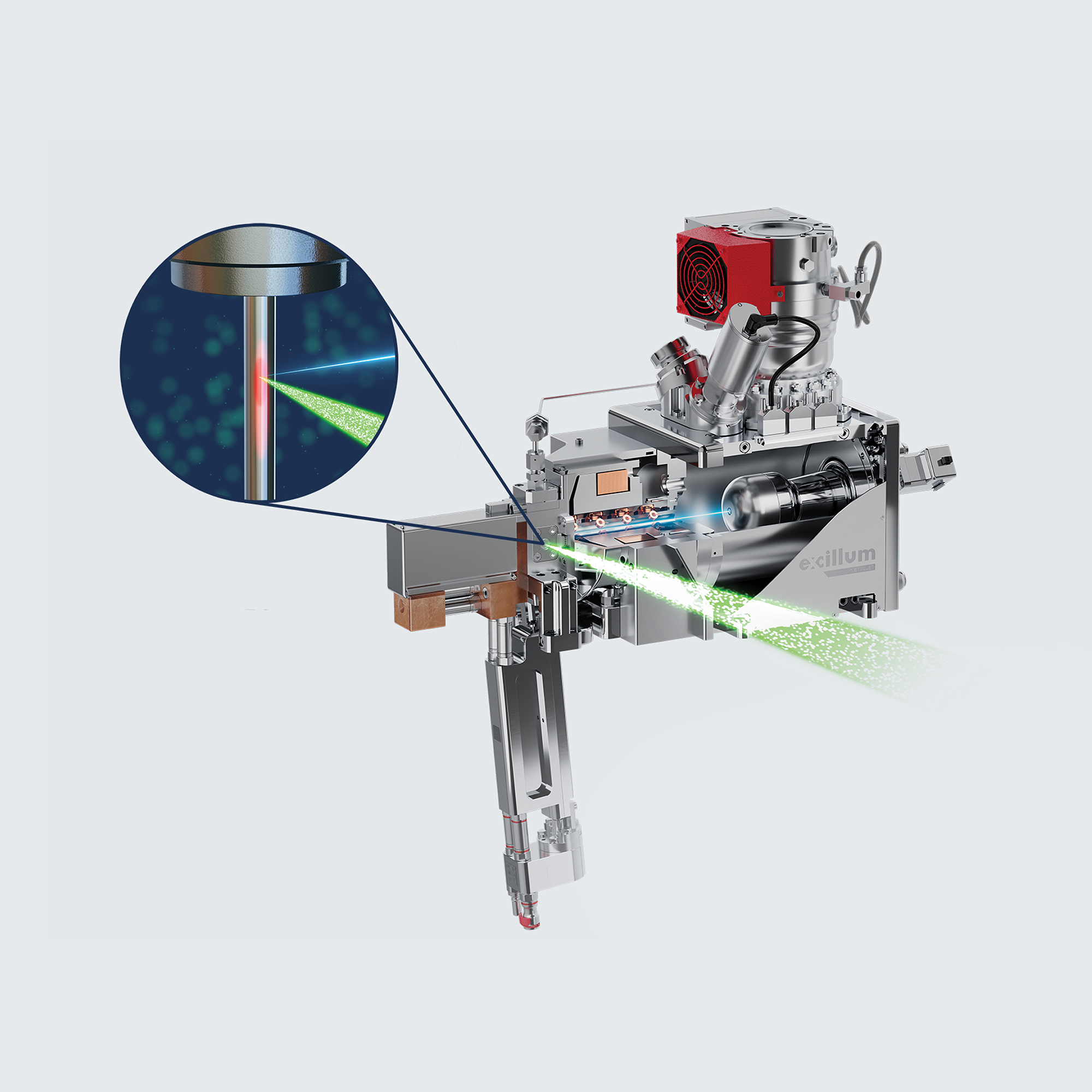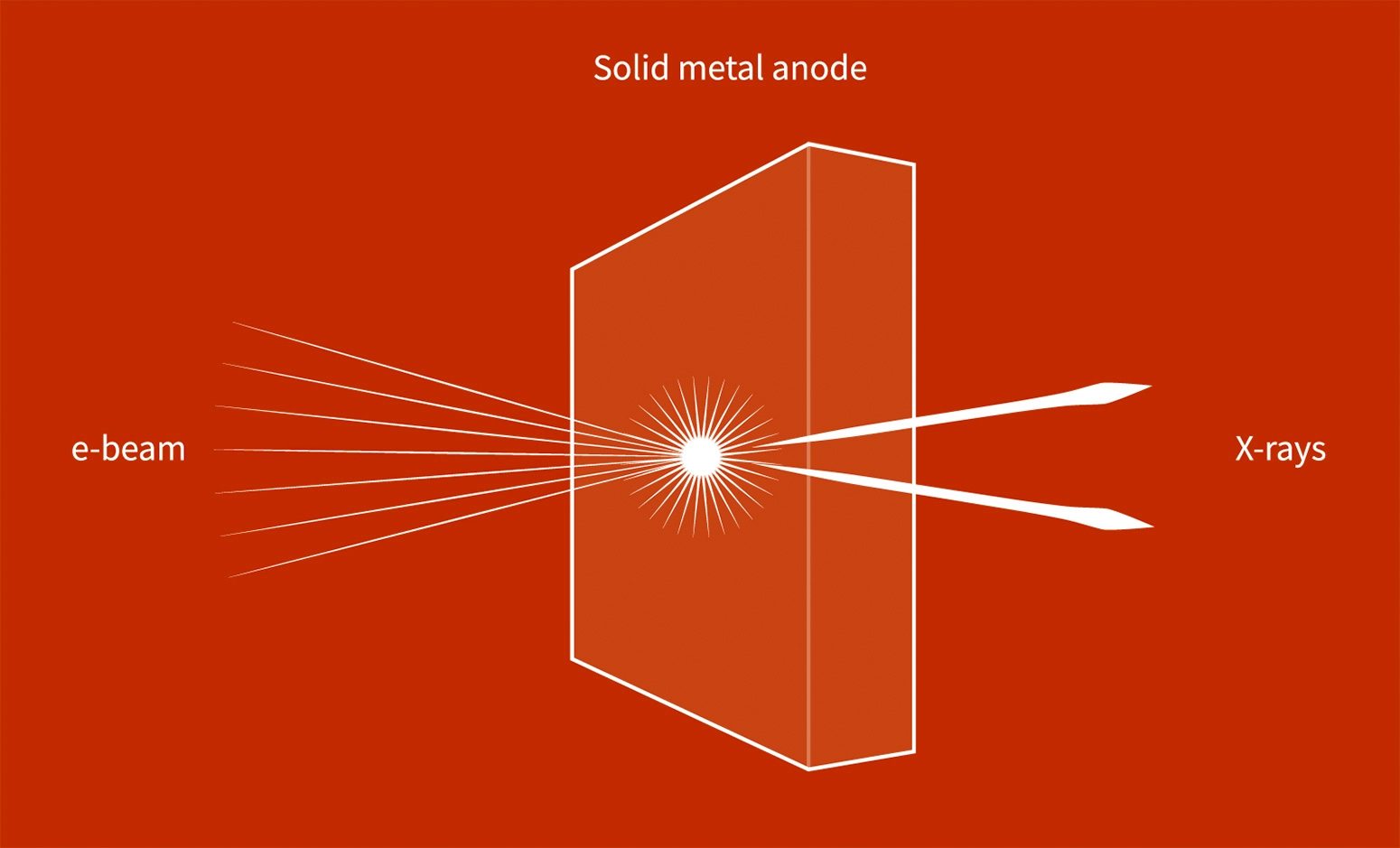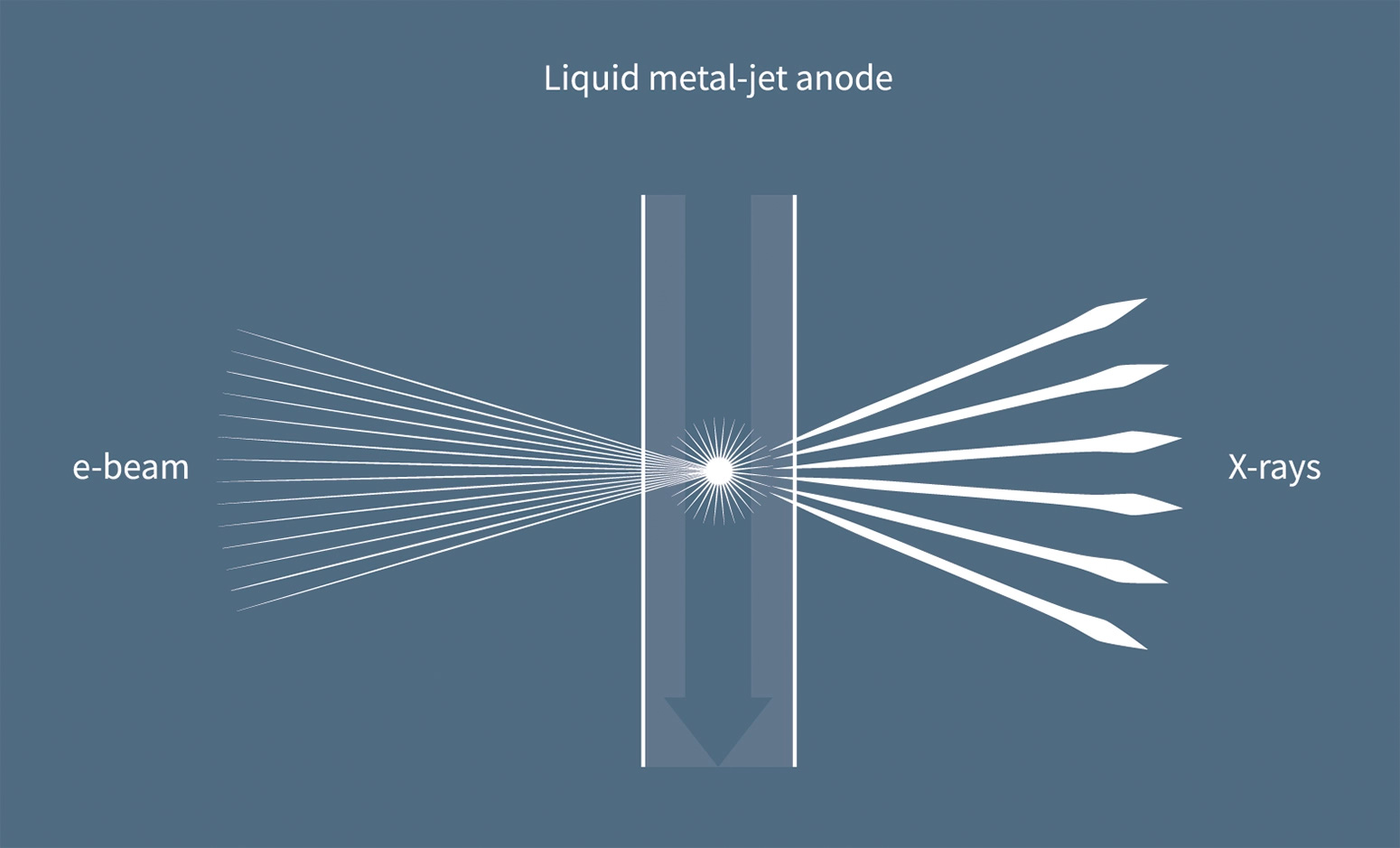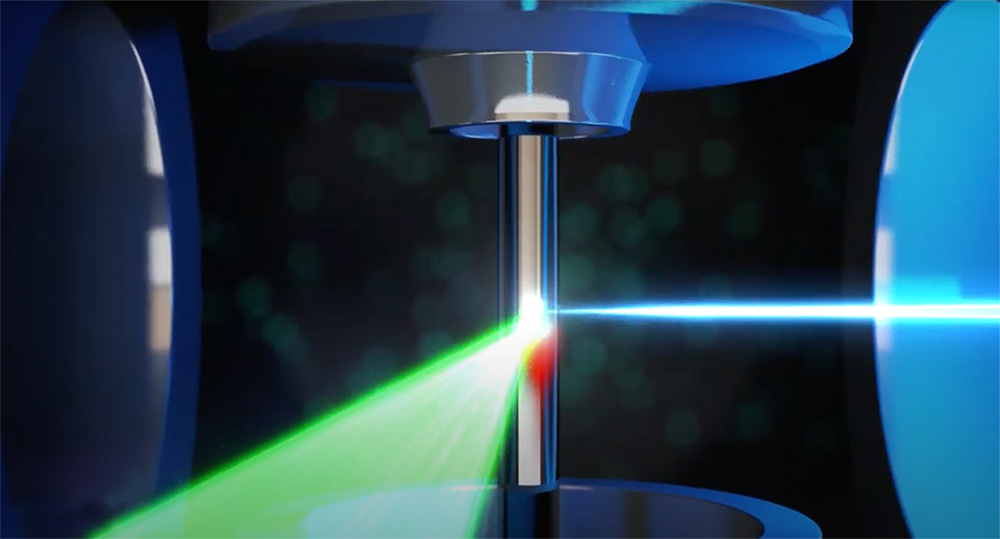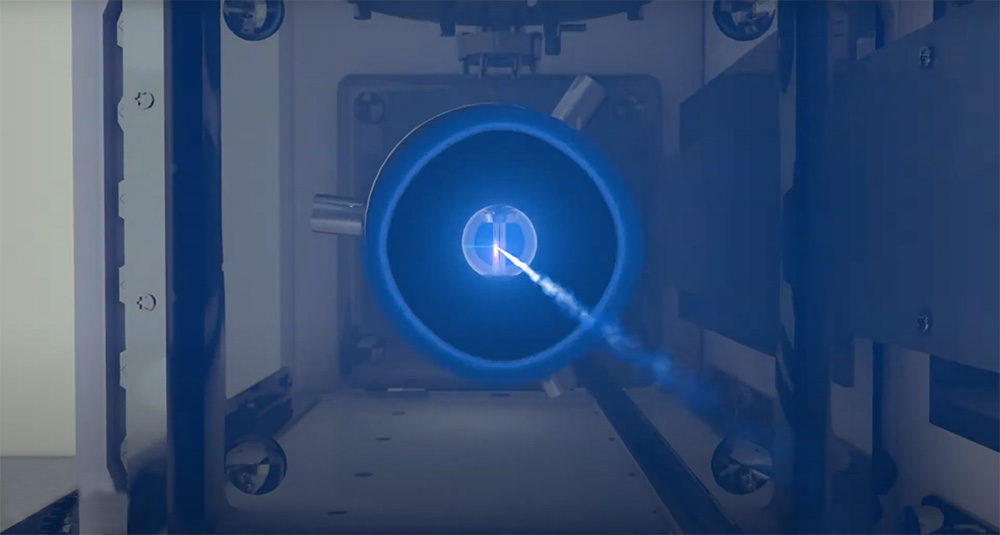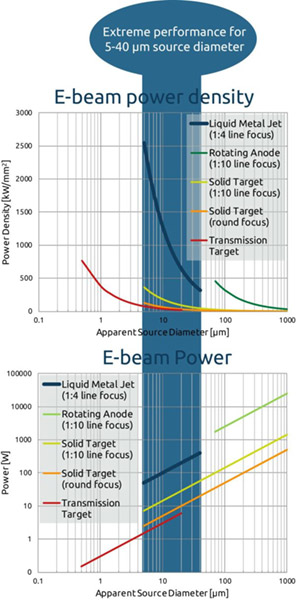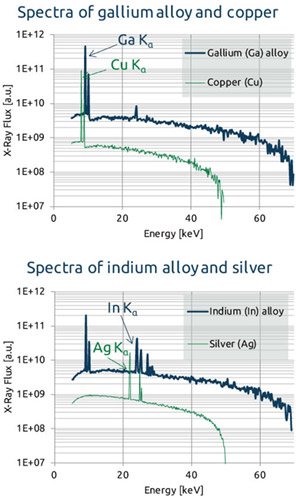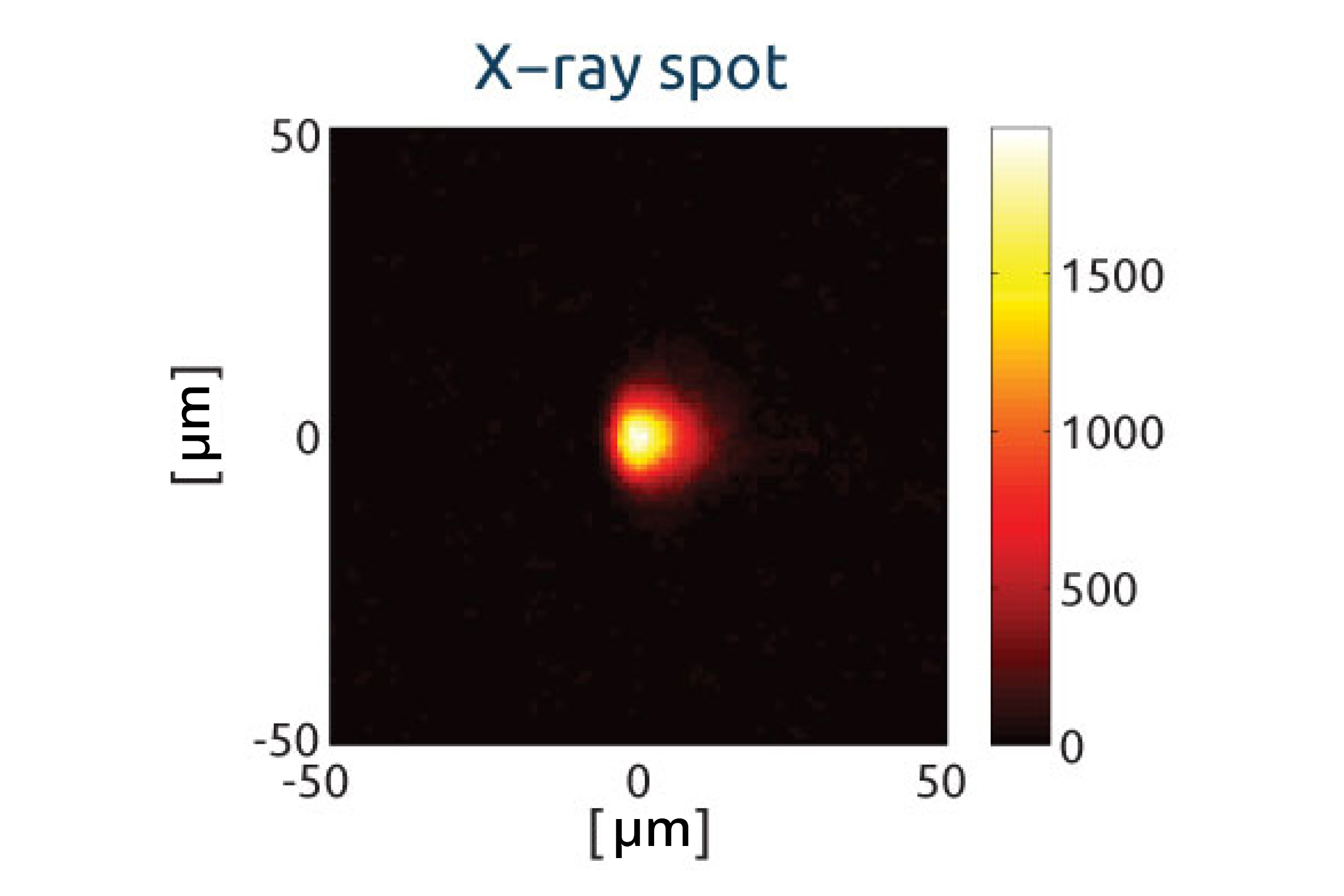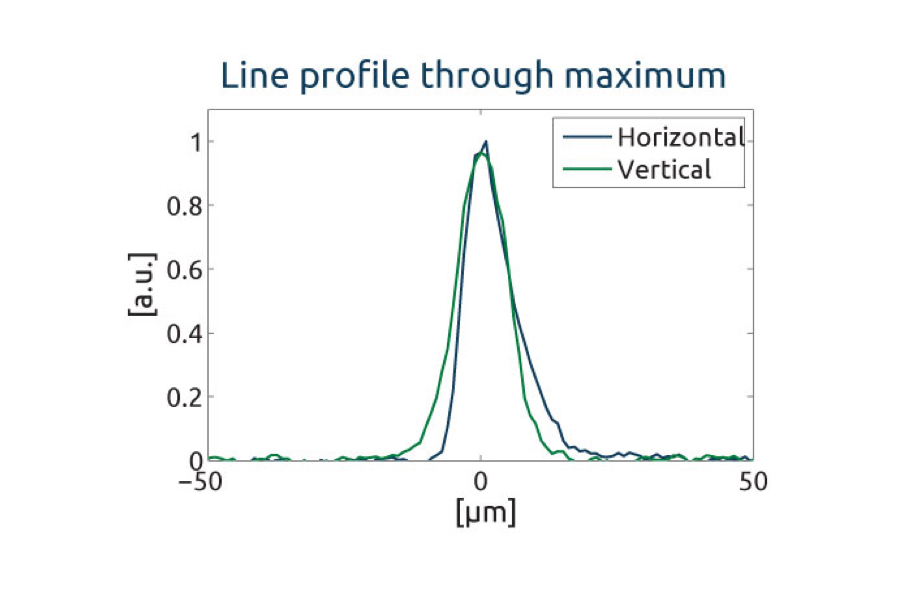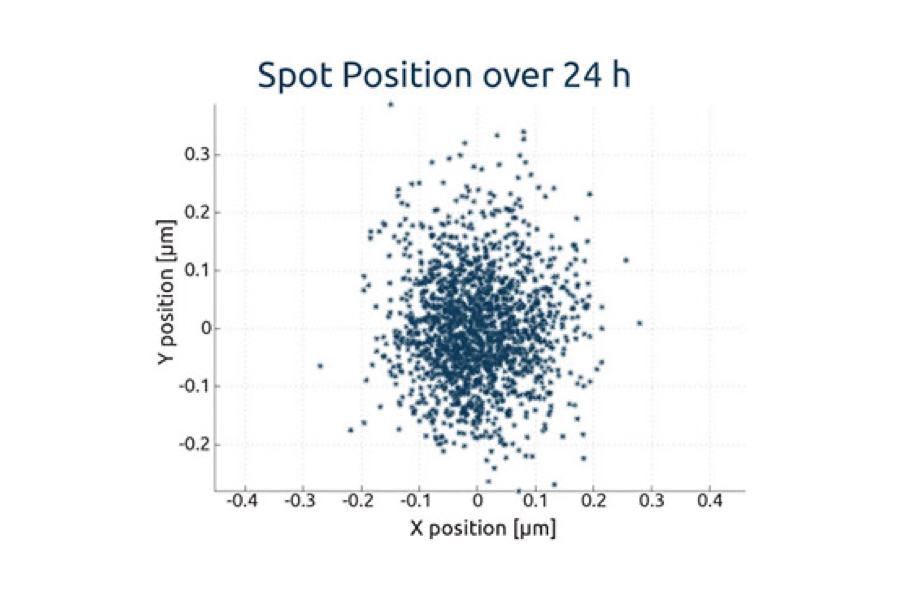The metal-jet technology
The metal-jet technology can thereby, e.g., enable a major increase of the image acquisition speed with maintained resolution in an X-ray imaging application or measurement throughput improvement combined with better precision and accuracy in an analytical application.
Especially in the microfocus X-ray spot size range, from about 5 µm diameter to a few tens of µm, a source based on a liquid-metal jet anode significantly outperforms a classical solid anode X-ray source.
The liquid-metal-jet concept
The Excillum MetalJet X-ray tubes are conventional microfocus tubes with the solid-metal anode replaced by a liquid-metal jet. This type of anode is continuously regenerated and already in the molten stage. Thereby, the classical power limit of an X-ray source, when the anode is permanently damaged by the electron beam, may be disregarded. The metal-jet supports higher electron-beam power and can therefore generate higher X-ray flux.
Inside view of the metal-jet technology
Solid anode vs liquid-metal jet
A look inside the Excillum MetalJet
Power loading capability
The X-ray power of all electron-impact X-ray generators is limited by the thermal power loading of the anode. In conventional solid anode technology, the surface temperature of the anode must be well below the melting point in order to avoid damage and this is fundamentally limited by the anode target material properties, primarily the melting point, the vapor pressure and especially the thermal conductivity. The liquid-metal anode is different since the limitation to maintain the target at well below melting point in removed. This is due to the fact that the material is already molten and that it is regenerative by nature, supplying new fresh target material at a rate of close to 100 m/s. This means that the electron beam and anode interaction may be destructive.
Extreme brightness
Somewhat counter-intuitively, the power loading capability of small-focus X-ray tubes roughly scale with the diameter and not the area of the e-beam focus. Therefore, the brightness is inversely proportional to the source diameter. By combining extreme power loading capability and a small electron focus, a liquid-jet-source can achieve unprecedented brightness at micron spot sizes.
X-ray spectra of liquid metal
In order to reach different X-ray emission lines, different metal alloys are used. First generation metal-jet sources feature metal alloys that are molten at more or less room temperature. Still, several alloys have emission characteristics similar to regular solid anodes. Future upgrades can also include alloys with higher melting points.
Gallium alloy
A gallium (Ga) rich alloy has Kα emission of 9.2 keV (1.3 Å) which is close to the copper (Cu) Kα emission line at 8.04 keV (1.54 Å).
Indium alloy
An indium (In) rich alloy has Kα emission of 24.2 keV (0.51 Å) which is close to the silver (Ag) Kα emission line at 22.1 keV (0.56 Å).
Tunable size
Questions about our products?
Speak to our experts
We have a growing organization and a network of partners with the capabilities and expertise to maximize the benefits of our technology in your application.

Ulf Lundström, Ph.D.
Application Performance Specialist
Some X-ray methods using MetalJet
User stories
Experiences with the Excillum MetalJet X-ray sources
Learn about some of our customers’ experiences with our state-of-the-art X-ray sources.
